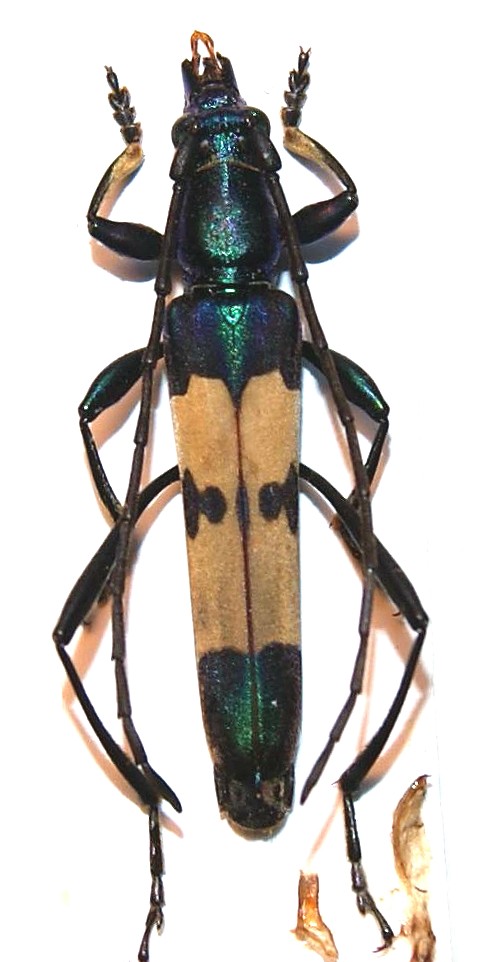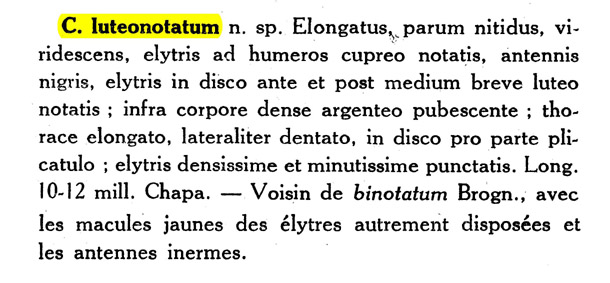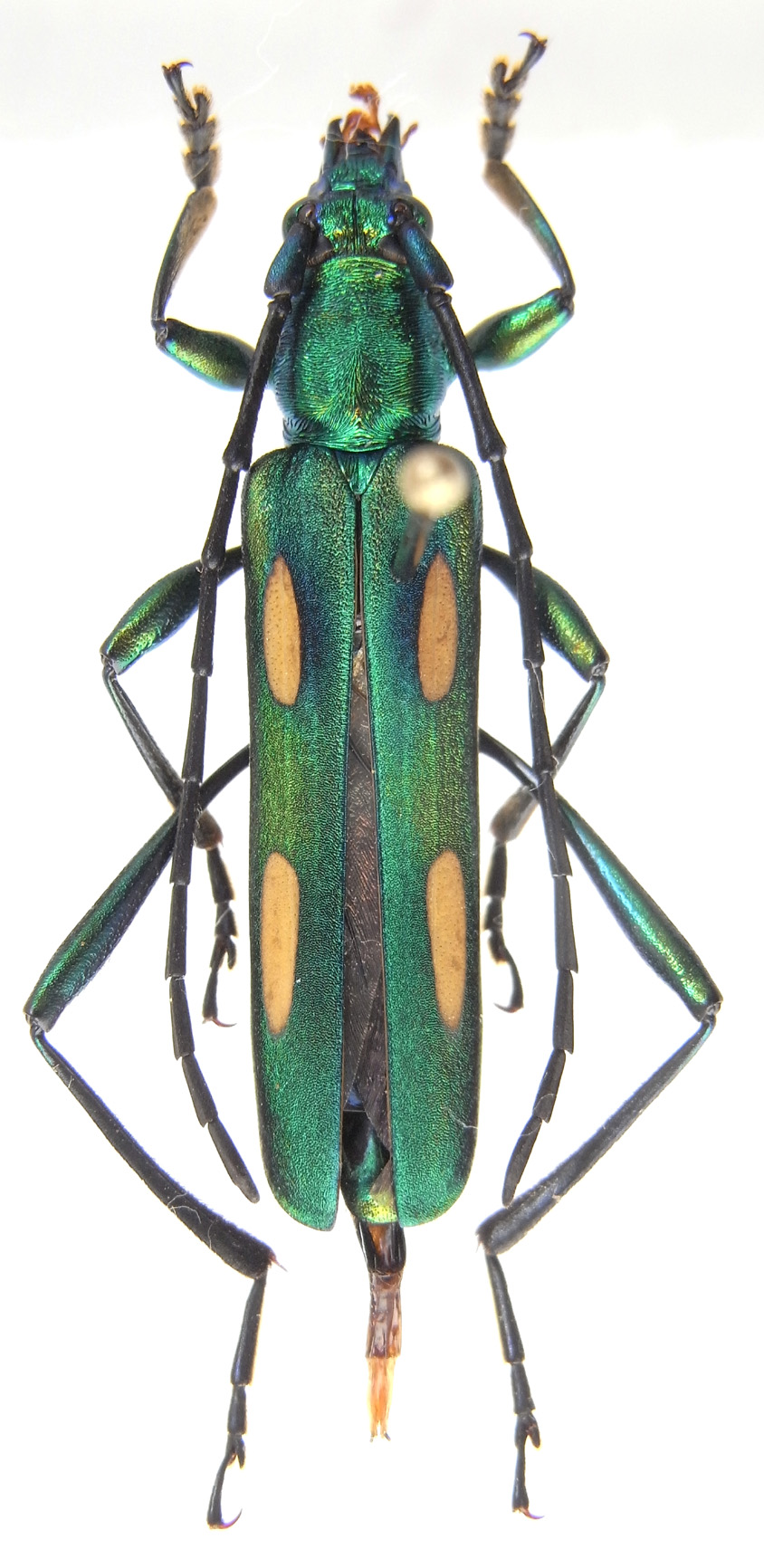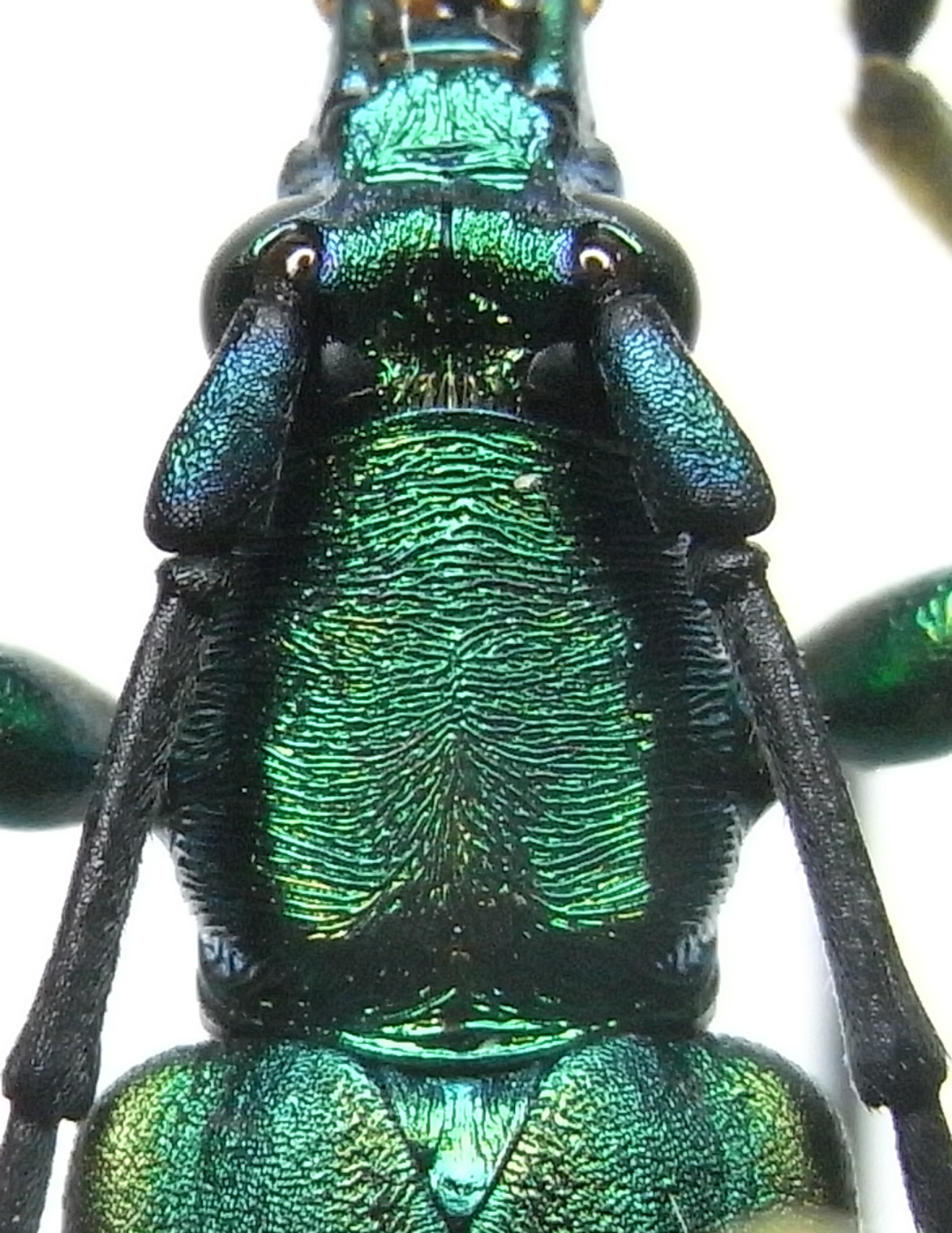| T O P I C R E V I E W |
| Andre |
Posted - 23/04/2012 : 15:49:16

Callichromatini
Hallo, cerambycidae from N-Thailand, 2,3 cm. |
| 8 L A T E S T R E P L I E S (Newest First) |
| Andre |
Posted - 24/07/2014 : 22:43:06
Sicher ist wohl nur, das beide zur Untergattung
Polyzonus (Striatopolyzonus) gehören, siehe Bentanachs, 2012.
Polyzonus flavocinctus gehört ohne jeden Zweifel ebenfalls in diese Untergattung, ist in genanntem Werk aber als Polyzonus (Polyzonus) geführt. Das zu P. flavocinctus abgebildete Männchen (Abb. 90)gehört zu einer anderen Art !!! Auch das Pronotum ist demzufolge völlig falsch.
Das zugeordnete Männchen (Abb. 69) von Polyzonus (Polyzonus) bizonatus ist eine andere Art.....und demzufolge stimmt auch das Pronotum nicht !!!
Die dazu gehörigen Abb. des Aedeagus sowie der Parameren sind auch nicht zutreffend.
Bei Polyzonus (Parapolyzonus) prasinus ist es ähnlich.
Sämtliche faunistische Angaben sind demzufolge auch nicht exakt.
Es ist ein Desaster 
|
| Xavier |
Posted - 24/07/2014 : 21:30:09

Here the original description of Polyzonus (Striatopolyzonus) luteonotatus (Pic, 1928). Lenght doesn't fit. |
| Xavier |
Posted - 25/04/2014 : 07:18:21
Ok, hummm, I've seen other mistakes in this book.
Thanks a lot for the id.  |
| Andre |
Posted - 25/04/2014 : 00:19:09
Hallo Xavier. Your last spec. is Polyzonus (Striatopolyzonus) luteonotatus Pic, 1928.
The Abb (h) S.159 in "WEIGEL & Al, Contribution to the Fauna of Longhorn Beetles in the Naban River watershed national nature Reserve, 2013" is also not Polyzonus tetraspilotus.....is also P. luteonotatus !
And by the way....
S.158 Abb (g) is not Aphrodisium faldermanni...is A. delatouchei
S.158 Abb (h) is not Aphrodisium gibbicolle.....is A. ?
S.158 Abb (i) is not Chelidonium binotatum ....is Chelidonium venereum
S.159 Abb (d) is not Chloridolum viride.....is C.cf.parvulus
S.159 Abb (g) is not Polyzonus prasinus......is P. ?
 |
| Xavier |
Posted - 03/10/2013 : 22:01:29
 
25 mm. Hua Phan, Nord-est Laos.
Gérard pense qu'il s'agit de la même espèce. Moi et la description en langue espagnole  ... Tu confirmes Francesco ? ... Tu confirmes Francesco ? |
| Francesco |
Posted - 24/08/2012 : 21:56:01
In the revision of the genus Polyzonus, which Bentanachs has just published, P. latemaculatus has been considered as a variety of P. (Striatopolyzonus n. gen.) tetraspilotus (Hope, 1835).
Though your variety has not been represented, I think that tetrapilotus is the most likely ID. |
| Andre |
Posted - 24/04/2012 : 11:43:51
Many thanks for your help.
Best wishes, Andre |
| Francesco |
Posted - 23/04/2012 : 21:57:46
It is a Polyzonus, but I do not know this species / variety (P. latemaculatus?) |


